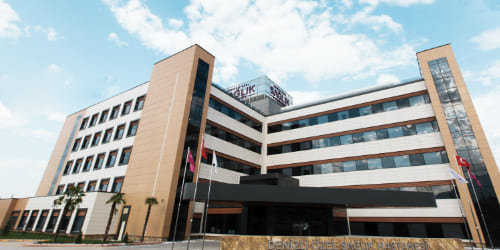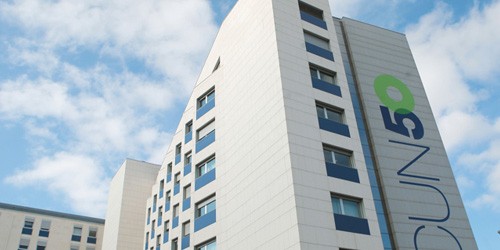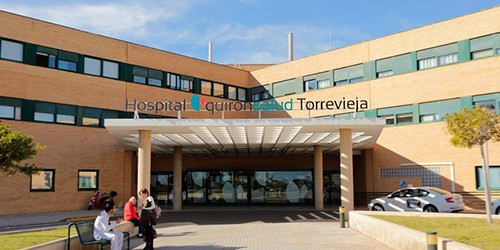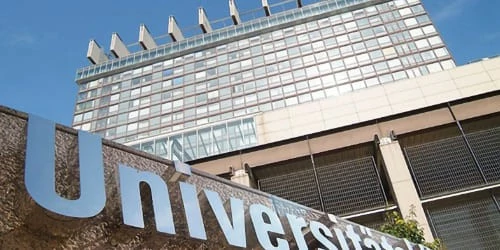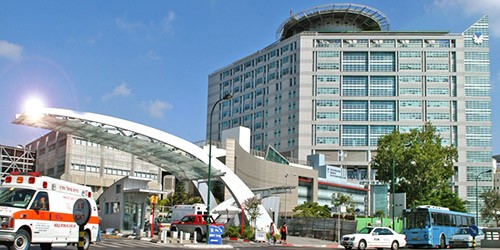Cystectomy is the main treatment for bladder cancer, the 10th most common oncology in the world. Up to 90% of patients with this diagnosis need surgery to recover. This procedure is considered difficult to perform, especially in the later stages of the disease. The risks can be reduced by using the da Vinci robot. Learn more from this article.
Listen to the article:
What is a cystectomy and for which diseases is it performed?
During a cystectomy, a surgeon removes the patient’s bladder. The main indication for this operation is cancer. Therefore, the neighbouring tissues affected by the disease often need to be removed as well. For men, this may include the prostate and pelvic lymph nodes, for women – the uterus, fallopian tubes, ovaries, cervix, anterior vaginal wall and urethra. This type of surgery is called a radical cystectomy.
Bladder removal is indicated for the following conditions:
Bladder cancer;
Metastases from colorectal, prostate or endometrial cancer;
Severe interstitial cystitis unresponsive to conservative treatment;
Bladder abnormalities;
Bladder diverticula;
An abnormal connection (fistula) between the colon or vagina and the bladder;
Localised endometriosis of the bladder;
Other diseases, such as pheochromocytoma, schwannoma, bladder endocervicosis or cavernous haemangioma.
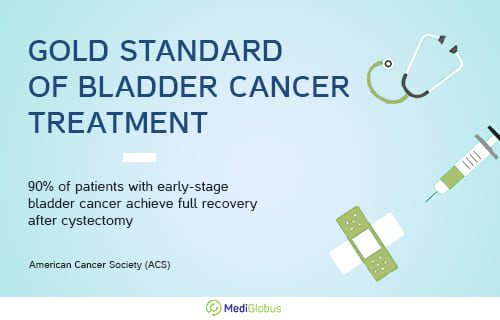
Radical cystectomy is considered the “gold standard” in the treatment of bladder cancer. It is often supplemented by chemotherapy, radiation therapy, targeted therapy and HIPEC – intra-abdominal chemotherapy. The specific treatment plan is chosen by the doctor based on the type of carcinoma, stage of the disease, results of laboratory tests, etc.
After the bladder has been removed, doctors need to create an alternative route for urine to leave the body. The surgeon will construct a stoma or an artificial bladder.
The use of the da Vinci robotic system for cystectomies has increased over the last 10 years. This is a high-precision technology that is used to improve the safety of minimally invasive surgeries. Although the name implies that there is a robot involved, in fact, a surgeon is in charge of everything that happens in the operating room. Sitting at a special console, he or she controls the movements of the surgical robot, having much better mobility and visibility of the operated area than in conventional open surgery.
The FDA has approved the use of the da Vinci robot for radical cystectomies.
BLADDER CANCER TREATMENT BOOKING
Leave an application on our website and a MediGlobus coordinator will call you back to help you find the right clinic for bladder cancer treatment abroad and arrange your trip.
Benefits of robotic cystectomy
The imaging capabilities of da Vinci robot surgery are far superior to all other methods. Today’s machines create a 3D image of the operated organ with a 15x magnification of the image. This allows the surgeon to distinguish between muscle tissue and nerves in a much easier way, thus protecting the patient from side effects.
The da Vinci robot uses the EndoWrist technology to perform the manipulation. It makes the robotic “hands” extremely sensitive to the movements of the surgeon and gives them the ability to rotate around their axis through 360°. The software has built-in safeguards to eliminate hand tremors and human factor errors.
As with a standard cystectomy, robot-assisted surgery may require reconstruction of the removed bladder. The da Vinci surgical system provides the physician with an excellent visual plane and improved surgical dexterity.
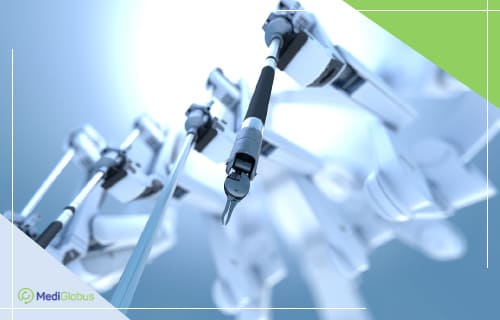
| Comparison criteria | Robotic cystectomy | Open cystectomy |
|---|---|---|
| Effectiveness of the surgery | 14% higher chance of complete removal of the cancer | 4-38% of patients experience a recurrence due to residual cancer cells |
| Safety of the surgery | Lesser risk of damaging important muscles and delicate nerve tissue | Various complications occur in about a third of patients |
| Blood loss | 5 times less blood loss | More blood loss due to the large incision |
| Scars | Fewer visible scars | Only a large scar remains on the lower abdomen |
| Side effects | 4 times less chance of postoperative incontinence, impotence or other complications | 20-30% of patients suffer from incontinence and other genitourinary complications for a prolonged period after surgery |
| Pain | Minimal postoperative pain and discomfort | More severe pain due to the large incision |
| Recovery | Up to 3 times shorter hospital stay and even faster return to a normal activity level | Most patients remain in the hospital for up to a week |
A cystectomy using the da Vinci robot is considered a safer treatment option. However, it is important to remember that the results of the surgery depend primarily on the skill and professionalism of the surgeon. Not every doctor is trained to use this equipment and has enough experience. When choosing which type of surgery is best – robotic, laparoscopic or open – it is always best to rely on the opinion of your doctor or, when in doubt, to seek a second medical opinion. Some foreign clinics offer this service to their patients before any major interventions are carried out.
How robotic cystectomy is performed
Before the robotic cystectomy begins, the patient’s abdomen is filled with carbon dioxide. This creates a working space for the surgeon. The patient will lie on his or her back with the legs slightly elevated to give the doctor better access to the organs.
The surgeon will then make 5-6 small punctures in the abdomen to insert a camera and instruments that will be used to remove the bladder – the robot’s “arms”. This will be used to remove all tissues affected by disease or cancer – the bladder itself, lymph nodes, prostate, ovaries, etc.
In many cases, bladder reconstruction is performed immediately after resection. Surgeons can use three techniques for this purpose:
Creation of a stoma. The surgeon connects the ureters to one end of the ileum and its other end – to an opening in the skin near the belly button on the right side. A plastic ostomy bag will need to be worn over the stoma to collect the urine.
Continent urine diversion. The surgeon creates a urine reservoir from part of the small and large intestines. The ureters are connected to one end of the reservoir and the other end connects to a stoma in the abdominal skin. The reservoir stores urine and must be emptied periodically by inserting a small drainage tube into the stoma. However, an external pouch will not be necessary for this type of surgery.
An artificial bladder. The doctor uses part of the small intestine to create a reservoir for storing urine. The ureters are attached to one end of the reservoir, while the other is connected to the urethra. The patient will be able to relieve themselves by relaxing the pelvic muscles and tensing the abdominal muscles.
Performing a cystectomy with the da Vinci robot allows the surgeon to make smaller incisions, saving important nerve and muscle tissue. The patient has a shorter hospital stay, fewer complications and a faster recovery period.
CONSULT AN ONCOLOGIST
A consultation with an experienced specialist in bladder cancer is possible in person or online by contacting the international platform MediGlobus. To send your request, please click on the button below and fill out the form.
Prognosis of cancer treatment with cystectomy
The prognosis for the treatment of bladder cancer depends on many factors, not least of which is the professionalism of the surgeon carrying out the operation. The characteristics of the disease also influence the outcome. Here are some of the indicators that are used in assessing the patient’s condition:
If cancer has not penetrated beyond the borders of the bladder, there is a 75-85% chance that the patient will make a full recovery after the surgery. 50-60% of patients fall into this category.
The spread of the cancer process into fatty tissue or neighbouring organs reduces the prognosis by 45-55%.
Lymph node involvement is considered a bad sign, but the prognosis also depends on what stage the disease is at.
Statistically, the removal of more than 10 lymph nodes is associated with a better prognosis for recovery.
Neoadjuvant chemotherapy reduces the risk of recurrence compared to surgery alone. Those who have not had chemotherapy before surgery can improve their prognosis with adjuvant (post-operative) chemotherapy.
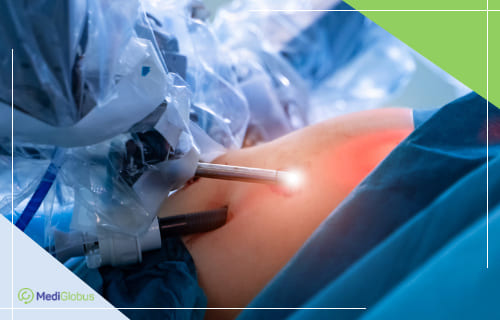
What happens after a robotic cystectomy

Compared with open surgery, recovery from a robotic cystectomy is quicker and easier. The rehabilitation period also depends on the extent of the surgery – a radical cystectomy requires a longer hospital stay than a partial one. Hospitalisation time is very individual and can vary from one day to one week.
At first, patients will experience problems with bowel function and poor appetite. This is normal. The body may need from a few weeks to a couple of months to recover from the surgery.
Cystectomy also affects urination. After partial resection, patients will feel the need to go to the toilet more often. If a stoma or artificial bladder is created, it will be necessary to adapt to their use.
In many men, cystectomy leads to erectile dysfunction. To protect their patients from this undesirable consequence, modern clinics often use a nerve-sparing approach. The chances of sexual function recovering after such an intervention are higher. With the da Vinci robot, the rehabilitation period is the shortest at around 11 months.
Women may also experience discomfort during sex or difficulties with arousal after a radical cystectomy if the pelvic nerve pathways have been damaged.
Some modern cancer centres have introduced an enhanced recovery programme after pelvic surgery, including cystectomy. It shortens the period of hospitalisation and reduces the incidence of side effects.
The cost of a cystectomy with the da Vinci robot abroad
| Country | Cost |
|---|---|
| from €20,000 | |
| from $18,000 | |
| from €25,000-28,000 | |
| from $25,000 |
Where to go for a robotic cystectomy?
Summary
The da Vinci robot is used in cystectomies (removal of the bladder) to reduce the risk of postoperative complications, and blood loss and shorten the recovery period. The surgery is most often used to treat bladder cancer.
The chance of completely removing cancer with the da Vinci robot is 14% higher than with open surgery.
Performing a cystectomy with the da Vinci robot allows the surgeon to make smaller incisions, saving important nerve and muscle tissue.
If cancer has not spread beyond the bladder, there is a 75-85% chance that the patient will make a full recovery after the cystectomy.
The cost of cystectomy with the da Vinci robot begins at $18,000 (Turkey). In particular, the Liv Vadistanbul Clinic and Izmir Private Hospital perform this procedure. Other countries that offer quality bladder cancer treatment include Germany, Spain and Israel.
CYSTECTOMY APPOINTMENT
Contact the international platform MediGlobus and we will help you to find a good clinic for a robotic surgery as soon as possible. All consultations with our coordinating physicians are free of charge.
Sources:
- 1. Translational Andrology and Urology: Single port robotic radical cystectomy with intracorporeal urinary diversion: a case series and review
- 2.The Kaohsiung Journal of Medical Sciences: Local and systemic recurrence patterns of urothelial cancer after radical cystectomy
- 3.Advances of Urology: Complications of Radical Cystectomy and Orthotopic Reconstruction




